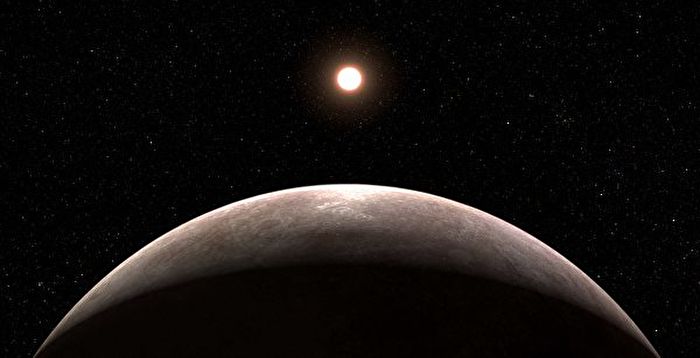Schematic illustration of an exoplanet (below) and the star it orbits (above). (Shutterstock)
[The Epoch Times, August 08, 2023](The Epoch Times reporter Linda compiles and reports) According to a scientific paper published in “Nature Communications”, exoplanets with liquid water may be more than previously thought Much more. This greatly increases the chances of life elsewhere in the galaxy, the authors say.
“According to previous estimates, one rocky planet in every 100 star systems has liquid water.” Dr. Lujendra Ojha, the lead researcher at Rutgers University in New Jersey, was held in Lyon, France on July 10 Goldschmidt Geochemical Society meeting.
“The new model shows that, given the right conditions, there could be one watery planet per star, so finding liquid water is a hundred times more likely than we thought.”
Since there are at least 100 billion stars in the Milky Way alone, “this represents a very strong possibility for life elsewhere in the universe,” Oja said.
subsurface ocean
Terrestrial exoplanets (planets orbiting stars other than our sun) are considered unlikely to have oceans, lakes and rivers, but this study suggests that many stars have geological conditions suitable for liquid water beneath their planetary surfaces.
So-called subsurface oceans have been discovered elsewhere in the solar system. Saturn’s moon Enceladus, and Jupiter’s moons Europa and Ganymede are all thought to harbor salty oceans beneath their icy crusts.
The dwarf planets Pluto and Ceres, as well as some moons of Uranus, are also suspected of having subsurface oceans.
necessary for life
“We know that the presence of liquid water is essential for life.” Oja said the new research shows that liquid water can be found in places that planetary scientists hadn’t considered. “This theoretically greatly increases the chances of finding an environment that is fertile for life.”
This conclusion comes from a better understanding of the possible existence of liquid water oceans under the surface of frozen planets. The heat generated by radioactive activity deep inside the planet is enough to keep water liquid, as we’ve seen in Antarctica and the Canadian Arctic. In addition, the gravitational effects of large planets can also affect the moons orbiting them.
A large fraction of planets orbiting red dwarfs, the most abundant type of star in the Milky Way, generate their own heat, the study found. “We found that when one considers the possibility of radioactivity producing liquid water, a large fraction of these exoplanets could host enough heat to sustain liquid water — a lot more than we thought,” Oja said.
The study also considered wet moons orbiting planets in the solar system. “Their interiors are constantly being stirred by the gravitational effects of large planets like Saturn and Jupiter. It’s similar to the moon’s effect on tides, but stronger,” Oja said.
watery moon
Planets like Enceladus and Europa are prime candidates for finding life in our solar system — a question that space agencies around the world are already tackling.
The European Space Agency’s (ESA) JUICE (Jupiter Ice Moon Explorer) mission, launched in April 2023 and due to arrive in 2031, has made two flybys of Europa, 21 flybys of Callisto and 12 flybys of Callisto. After Ganymede, it eventually enters Ganymede orbit.
NASA’s Europa Clipper will launch in October 2024 and conduct 32 flybys of Europa starting in 2030. ◇
Responsible editor: Sun Yun#


